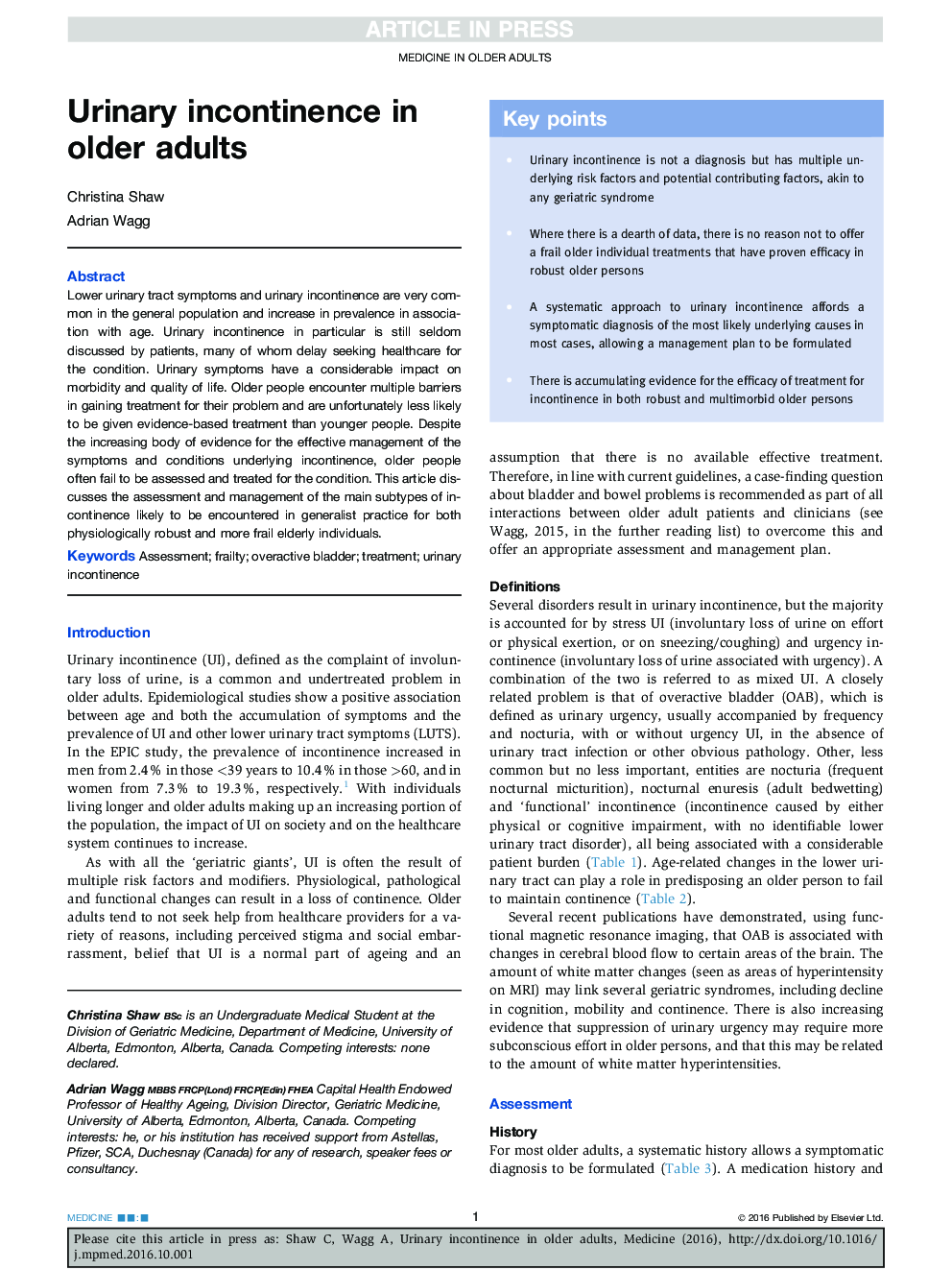| Article ID | Journal | Published Year | Pages | File Type |
|---|---|---|---|---|
| 5681143 | Medicine | 2017 | 5 Pages |
Abstract
Lower urinary tract symptoms and urinary incontinence are very common in the general population and increase in prevalence in association with age. Urinary incontinence in particular is still seldom discussed by patients, many of whom delay seeking healthcare for the condition. Urinary symptoms have a considerable impact on morbidity and quality of life. Older people encounter multiple barriers in gaining treatment for their problem and are unfortunately less likely to be given evidence-based treatment than younger people. Despite the increasing body of evidence for the effective management of the symptoms and conditions underlying incontinence, older people often fail to be assessed and treated for the condition. This article discusses the assessment and management of the main subtypes of incontinence likely to be encountered in generalist practice for both physiologically robust and more frail elderly individuals.
Related Topics
Health Sciences
Medicine and Dentistry
Medicine and Dentistry (General)
Authors
Christina Shaw, Adrian Wagg,
